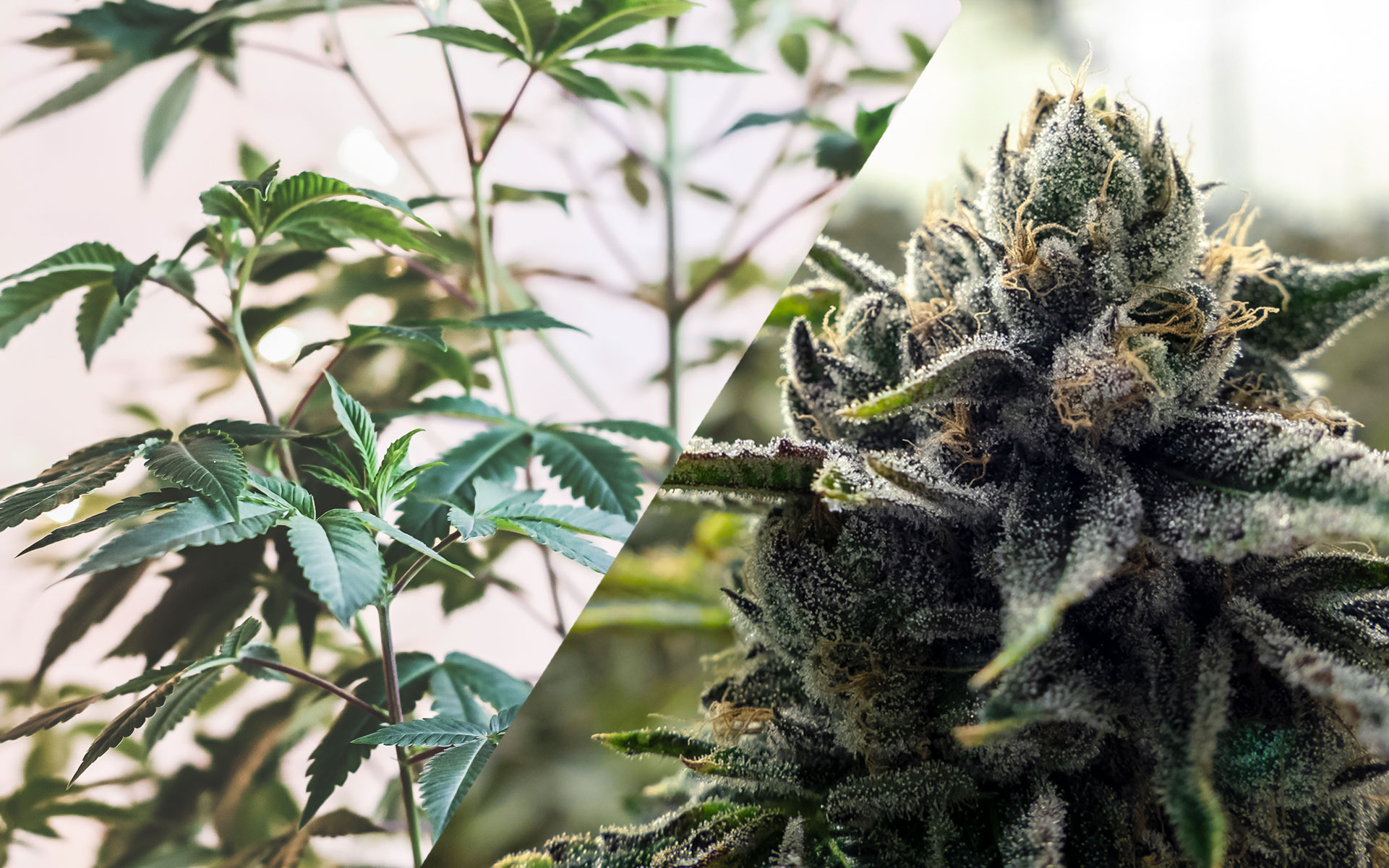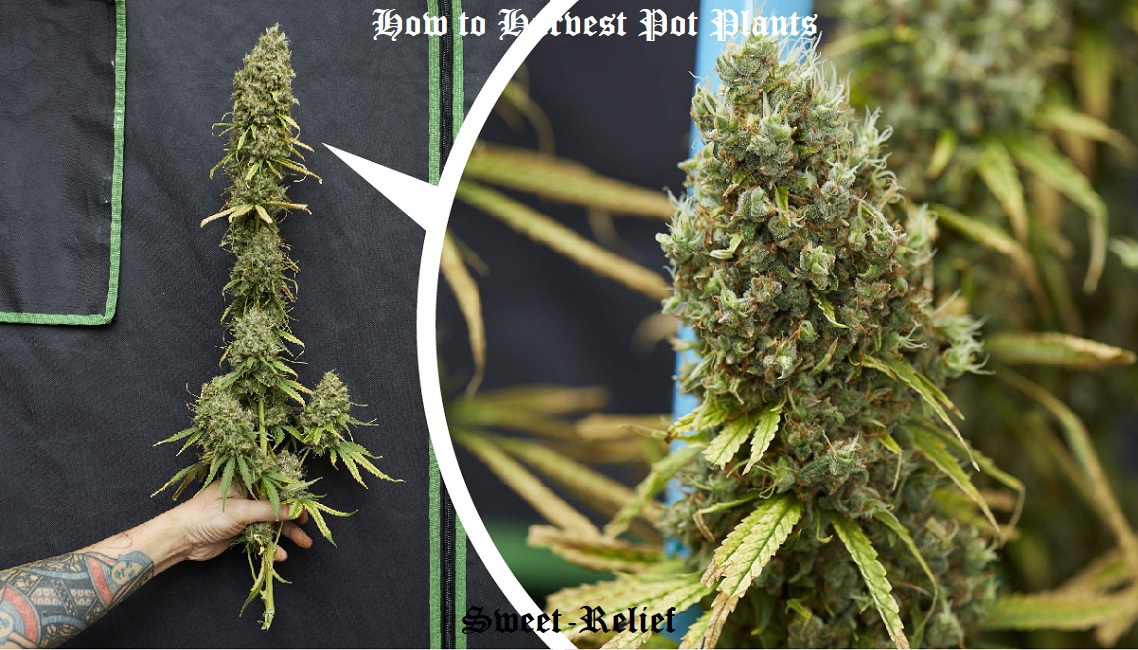In this article, you’ll learn how to harvest a Cannabis plant, how to dry and cure your buds. When to harvest and how to set a drying space. Avoid common mistakes and enjoy a good yield.
The flowering stage seems to be coming to an end and you are eager to harvest your plants as soon as possible. Harvesting is a crucial moment in cannabis cultivation. It is very common for beginners to get too ahead and try to chop their plants too early. The plant gives signals for us to know exactly when she’s ready to harvest.
Before Harvesting
Prepare your plants
- Check for pests and discard damaged parts (fungi, severe insect infestation).
- Cut out big fan leaves, especially if they had pests.
- Flushing: When growing with mineral nutrients, flushing is recommended. Start 2 weeks before harvesting.
Flushing Cannabis plants before harvest
Flushing a Cannabis plant is basically to run a lot of water through its growing medium (soil, for example) to get rid of the excess of salt and mineral nutrients. This action forces your plant to use up any amount of nutrients previously absorbed. The result will be buds with better flavor and aroma. The excess of fertilizer in your Cannabis plant may result in buds that are harsh to the throat when smoked.
Flushing with clean, room temperature water will help to get rid of fertilizer excess in the soil.
How to flush your indoor Cannabis plants
Place a container (bucket or similar) under the pot for collecting the excess water, be careful or this may result in a bit of a mess.
Regarding the amount of water needed, a good rule is to calculate up to 3 times the volume of the pot. For example, if your pot is 5 liters, you can flush with up to 15 liters of water per pot. Start small with 1-2 liters and see how the plant reacts. An easy way of doing this is carefully placing each plant in a big bucket, barrel, shower, or bathtub and add the water gradually to the soil, without drowning the plant. The excess water will slowly drain from the bottom of the pot.
A good visual sign is that, in the beginning, the water coming from the bottom of the pot will be dark and will gradually turn to a lighter color. By running this process once in each plant, most of the salt buildup should flush away from the substrate. Discard the runoff water.
When to stop fertilizing before harvest
Two weeks before harvesting is usually a good moment to start flushing your plants and watering with water only (no fertilizers) until the harvesting moment.
When to stop watering before harvest
Depending on the size of the pot, you can stop watering 1-3 days before harvesting.
When should you harvest cannabis plants?

To harvest successfully, you should know the exact date that your plants started flowering. If you don’t know the exact date, then you should at least have an approximation. This knowledge will give you a rough idea of how long your plants will need to flower, and from that you can work out the approximate expected date that you will harvest.
Flowering times for cannabis vary greatly according to strain. Indica-dominant varieties generally finish early, in as little as seven or eight weeks after flowering begins, while sativa-dominant strains may require substantially longer—up to 24 weeks in some extreme cases. The majority do not require such long flowering times (10-12 weeks is generally the longest most growers are prepared to wait), and there are also numerous sativa-dominant commercial hybrids that will finish in under 10 weeks.
However, knowing the approximate requirements of your chosen strain may not be sufficient to judge whether your plants are ready for harvest. A useful technique is to assess the percentage of white hairs that have changed colour (usually to a brownish-orange, though some strains may have pinkish or purplish hairs). Plants should not be harvested until at least 40% of hairs have turned.
THC levels are often highest if harvesting when 40-70% of hairs have changed; if you continue to wait past this point, THC will begin to degrade to CBN. This may cause the effect of the finished flowers to be more soothing and less likely to induce anxiety. This process where THC degrades to CBN also occurs after harvesting and during decarboxylation.
It is also possible to assess maturity by using a magnifying glass to observe trichome colour. If clear, plants are immature; if cloudy, THC levels are at their maximum, and if amber, degradation has begun to occur.
How should you prepare yourself for the harvest?
Before commencing the harvest, ensure that you are equipped with the following:
- A pair of good quality rubber (powder free) or latex gloves
- A sharp, clean pair of scissors or shears
- A large plastic tray or tub in which to place cut branches
- Some twine or string you can use to attach your branches to hang and dry
- Something to hang the branches from, such as a clothes line, wardrobe dowel etc.
Note that the gloves will prevent sticky resin from adhering to your hands and will enable easier collection of the resin in case you want to make hashish. The blades of your cutting tool will also collect resin, which you can then scrape off and produce hashish. This is why it’s important that your scissors or shears are clean when you start using them!
It is better to cut branches separately to allow better airflow when drying, rather than keep plants whole.
Calculate the time you’ll need
A good manicuring of half a kilo of marijuana buds will take about 6 hours if you decide to do it by hand, and about two hours with a trimmer. Plan your time well and try to do on your day off so that you don´t get stuck halfway.
If you are growing in pots

Carry out a good washing of the roots to prevent the plant from retaining fertilisers; besides spoiling your buds’ taste, they are not good for your health either. Remember that whatever you give your plants is going directly into your body when you consume your cannabis, which is why we always recommend not using chemical fertilisers or pesticides, which, in addition to be being harmful to the environment, are also bad for your health.
Even if you have used organic fertilisers, it is not advisable for the plant to retain traces of minerals and other nutrients, which is why before harvest time (approximately two or three weeks) we recommend using water only on your plants.
